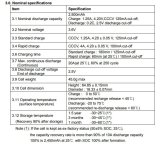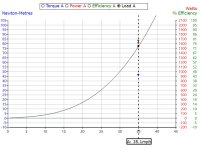Aquakitty
100 W
- Joined
- Jun 10, 2017
- Messages
- 179
Hey all,
I have 2 ebikes I use the same (new) battery on. One has a TSDZ2 which I believe is 15 or 18 amp controller. I could ride to work and back (one way) on this about 4-5 times, so I'd charge every second day.
The second is a DD front hub motor with a 15 amp controller (max 30 amps) @ 48v. I can only ride there and back once before battery is nearly dead.
On the TSDZ2, I had the stock firmware set to max. On the DD motor, I only ride at about level 2-3 which is plenty fast.
Pic of DD controller specs:


The battery is draining almost exactly 2x as fast. This means I have to charge after every commute since it nearly kills the 11.6Ah 48v battery.
I assumed since this controller is similar the battery would last about the same? Obviously not though. For the record, I am only running at level 2 or 3 on average, not maxing it out. My speed is not 2x as fast that's for sure.
So my question is: What is going on here? Is this controller just that much more "power hungry"? Can I perhaps install firmware on this controller (it's a KT controller) to limit the power a bit?
I have 2 ebikes I use the same (new) battery on. One has a TSDZ2 which I believe is 15 or 18 amp controller. I could ride to work and back (one way) on this about 4-5 times, so I'd charge every second day.
The second is a DD front hub motor with a 15 amp controller (max 30 amps) @ 48v. I can only ride there and back once before battery is nearly dead.
On the TSDZ2, I had the stock firmware set to max. On the DD motor, I only ride at about level 2-3 which is plenty fast.
Pic of DD controller specs:


The battery is draining almost exactly 2x as fast. This means I have to charge after every commute since it nearly kills the 11.6Ah 48v battery.
I assumed since this controller is similar the battery would last about the same? Obviously not though. For the record, I am only running at level 2 or 3 on average, not maxing it out. My speed is not 2x as fast that's for sure.
So my question is: What is going on here? Is this controller just that much more "power hungry"? Can I perhaps install firmware on this controller (it's a KT controller) to limit the power a bit?



